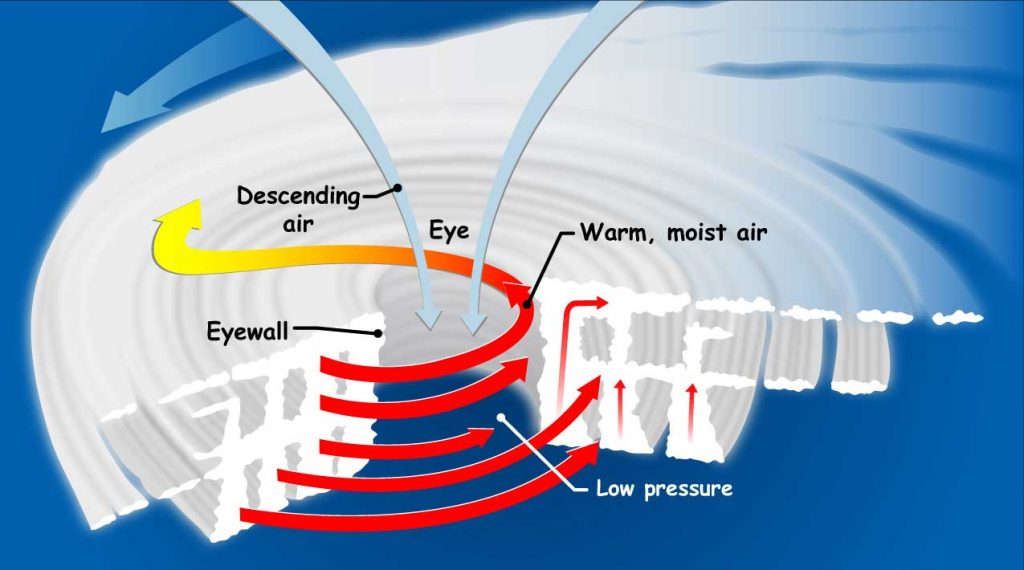Focus: GS-I Geography
Introduction
Texas is facing another hardship apart from being one of the largest hotspots for Covid-19 in the U.S., as Hurricane Hanna has made landfall.
Details
- As per the latest update issued by the National Hurricane Centre (NHC), the centre of Hanna has moved into north-eastern Mexico and the storm surge warning for Texas has been discontinued.
- There are five categories of tropical cyclones, depending on the wind speeds, and Hanna is category one.
- Once tropical cyclones make landfall, they become weaker since they are no longer fed by the heat of the ocean, but before dying out completely, they move far inland dumping inches of rainwater and causing wind damage.
What are hurricanes and how do they form?

- Tropical cyclones or hurricanes use warm, moist air as fuel and therefore form over warm ocean waters near the equator.
- When the warm, moist air rises upward from the surface of the ocean, it creates an area of low air pressure below.
- When this happens, the air from the surrounding areas, which has higher pressure, enters this space, eventually rising when it becomes warm and moist too.
- As the warm and moist air continues to rise, the surrounding air will keep entering the area of low air pressure.
- When the warm air rises and cools off, the water in the air forms clouds and this system of clouds and winds continues to grow and spin, fuelled by the ocean’s heat and the water that evaporates from its surface.
- As such storm systems rotate faster and faster, an eye forms in the centre.
- Storms that form towards the north of the equator rotate counter clockwise and those that form south of the equator spin clockwise because of the rotation of the Earth on its axis (Coriolis effect).
How are tropical cyclones named?
- Atlantic tropical storms are named according to lists by the National Hurricane Center (NHC).
- NHC uses alternating men and women’s names.
- These names are maintained and updated by an international committee of the World Meteorological Organisation (WTO).
- The WTO represents over 120 countries and uses pre-determined lists of names for each ocean basin of the world.
- Typically, the names should be short and should be readily understood when broadcast.
- There are 6 lists of such names that are used in rotation – so the list of names attributed to Atlantic tropical storms in 2019 will also be used in 2025.
- However, names of storms that caused particular damage and deaths are retired (not reused).
- Further, the only time that a storm may be renamed is when it dissipates to a tropical disturbance and reforms.
What is the use of Naming of Tropical Cyclones?
Naming of Tropical Cyclones helps the scientific community, disaster managers, media and general masses to:
- identify each individual cyclone.
- create awareness of its development.
- remove confusion in case of simultaneous occurrence of TCs over a region
- remember a TC easily
- rapidly and effectively disseminate warnings to much wider audience.
-Source: Indian Express





